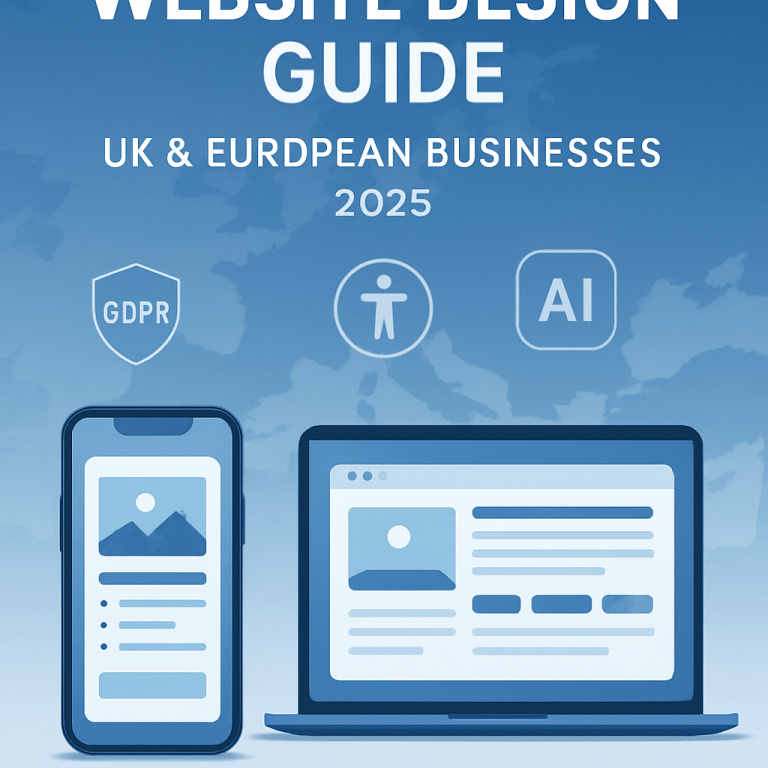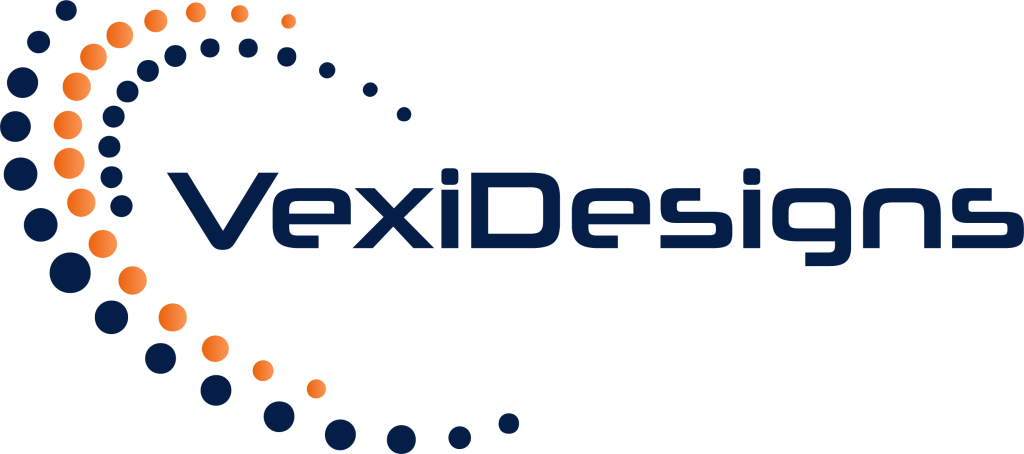A successful website in 2025 is more than just visually appealing—it’s a high-performing, accessible, secure, and conversion-optimized platform that reflects your brand credibility to both Google and human users.

Why Modern Website Design Matters
Over 75% of users judge a company’s trustworthiness based on its website design.
Fast, mobile-friendly sites are favored in both Google and AI-powered search rankings.
Compliance and transparency (GDPR, accessibility) are non-negotiable for EU/UK businesses.
2025’s Must-Have UK & European Web Design Trends
1. AI-Driven Personalization
AI and machine learning now power dynamic sites, real-time content customization, automated chatbots, and smart lead forms, increasing engagement and boosting conversions across European markets.
2. Accessibility-First & Inclusive Design
Websites must comply with WCAG 2.2, the UK Equality Act 2010, and EU accessibility standards. This includes:
High-contrast color schemes and bold, accessible typography
Keyboard navigation and screen-reader compatibility
Avoiding “dark patterns” and ensuring honest UX.
3. Mobile-First & Thumb-Friendly Navigation
Over 60% of web traffic is now via mobile. Top sites use:
Large, easily tappable buttons
Minimalist, intuitive navigation menus
Speed-optimized layouts (aim for <2s load).
4. Motion & Interaction
Micro interactions, parallax scrolling, hover effects, and subtle animations create memorable, interactive experiences—but always with performance and accessibility in mind.
5. Visual Boldness & Clean Aesthetics
Trends include:
Expressive, oversized typography and unique headers
Organic shapes, rich textures, and earthy/retro color palettes
Video, 3D, and AR experiences for immersive brand storytelling.
6. Sustainability & Green Web Practices
Efficient coding, reduced server requests, and green hosting are on the rise. Displaying your website’s environmental impact is a trust-builder with eco-conscious Europeans
Essential Best Practices for 2025
User Experience (UX) First: Research, user personas, and usability testing are essential for aligning your site with real user needs.
Data Privacy & Compliance: Incorporate robust privacy notices, GDPR-compliant consent tools, and ethical data use.
Performance Optimization: Compress images, use next-gen formats, code-splitting, lazy loading, and prioritize Core Web Vitals (Google).
Continuous Improvement: Use analytics, A/B testing, heat maps, and user feedback for ongoing enhancements.
Security Measures: HTTPS, strong password policies, anti-spam, and regular security audits are essential, especially in regulated sectors.
Conversion Optimization: Use clear CTAs, lead capture forms, social proof (testimonials/case studies), and transparent value propositions in key areas like hero sections and service pages.
Step-by-Step Web Design Process (2025)
Discovery and Planning:
Define business goals and primary audiences
Competitor analysis and feature brainstorming
Content needs, functionality, and technical planning
Sitemap & Information Architecture:
Visual blueprint of all pages and logical user paths
Wireframing/Prototyping:
Non-design sketches to map UX, navigation, CTAs, and user flows
Visual Design & Branding:
High-fidelity designs reflecting color, typography, and brand assets
Responsive layouts for desktop, mobile, and tablet
Development & Testing:
Clean, sustainable code, CMS setup (WordPress, Webflow, etc.), custom integrations
Usability, accessibility, cross-device/functionality, and performance testing
Launch & Optimization:
Migration, search engine indexing, post-launch checks, analytics setup, user onboarding
Ongoing optimization based on analytics and feedback
Features That Convert Visitors into Clients
Above-the-fold CTAs and contact info
Fast, frictionless landing pages
Live chat and conversational AI
Case studies and credible testimonials
Pricing transparency and clear value statements
Lead magnets (e.g., audit tools, guides)
Social proof throughout the user journey
Legal and Regulatory Considerations
GDPR/EU Data Laws: Transparent consent for all tracking and marketing cookies
Accessibility Compliance: Required for both public and private sector sites in UK/EU
Industry Regulations: Healthcare, finance, and other sectors have additional requirements—be sector-aware.
Top Platform Choices in Europe/UK
WordPress: Most popular CMS, flexible for all business sizes
Webflow: Visual/no-code design and excellent for custom UI/UX
Shopify/WooCommerce: For e-commerce
Custom Solutions: Advanced needs, larger enterprises
European & UK-Specific Design Insights
Multilingual support is increasingly vital for European markets
Regional payment and contact options (e.g., SEPA, Klarna, WhatsApp)
Culturally sensitive content and imagery
Focus on trust badges and regulatory compliance logos
Conclusion
In 2025, a winning website for UK and European businesses blends innovative design, legal compliance, fast performance, and a relentless focus on conversion. Keep these trends, best practices, and step-by-step strategies at the core of your next redesign or build to outperform competitors in both Google and future AI search.
For custom guidance or a free website audit, connect with a specialist at VexiDesigns—helping UK & European brands win online through cutting-edge design and digital strategy.

